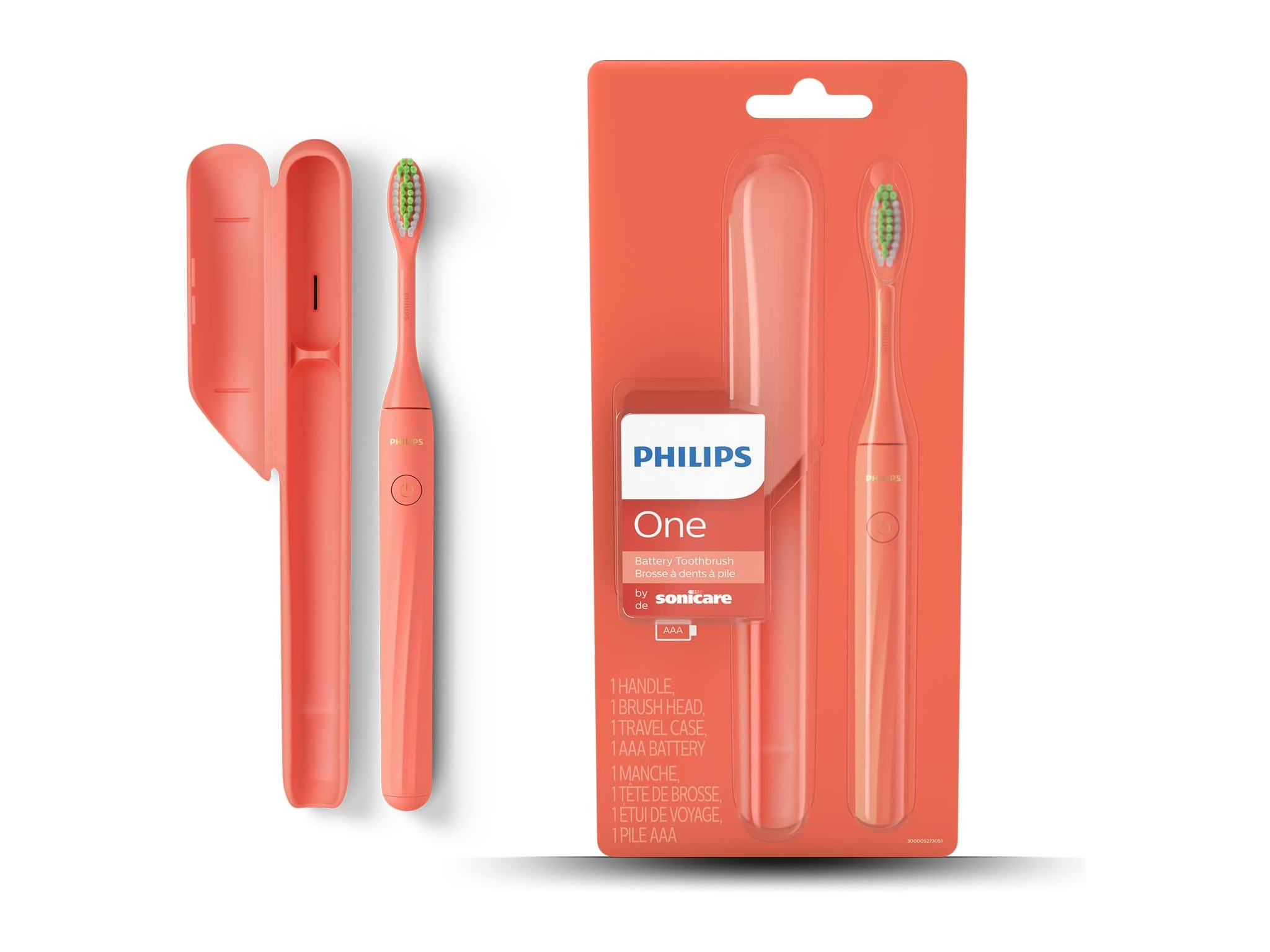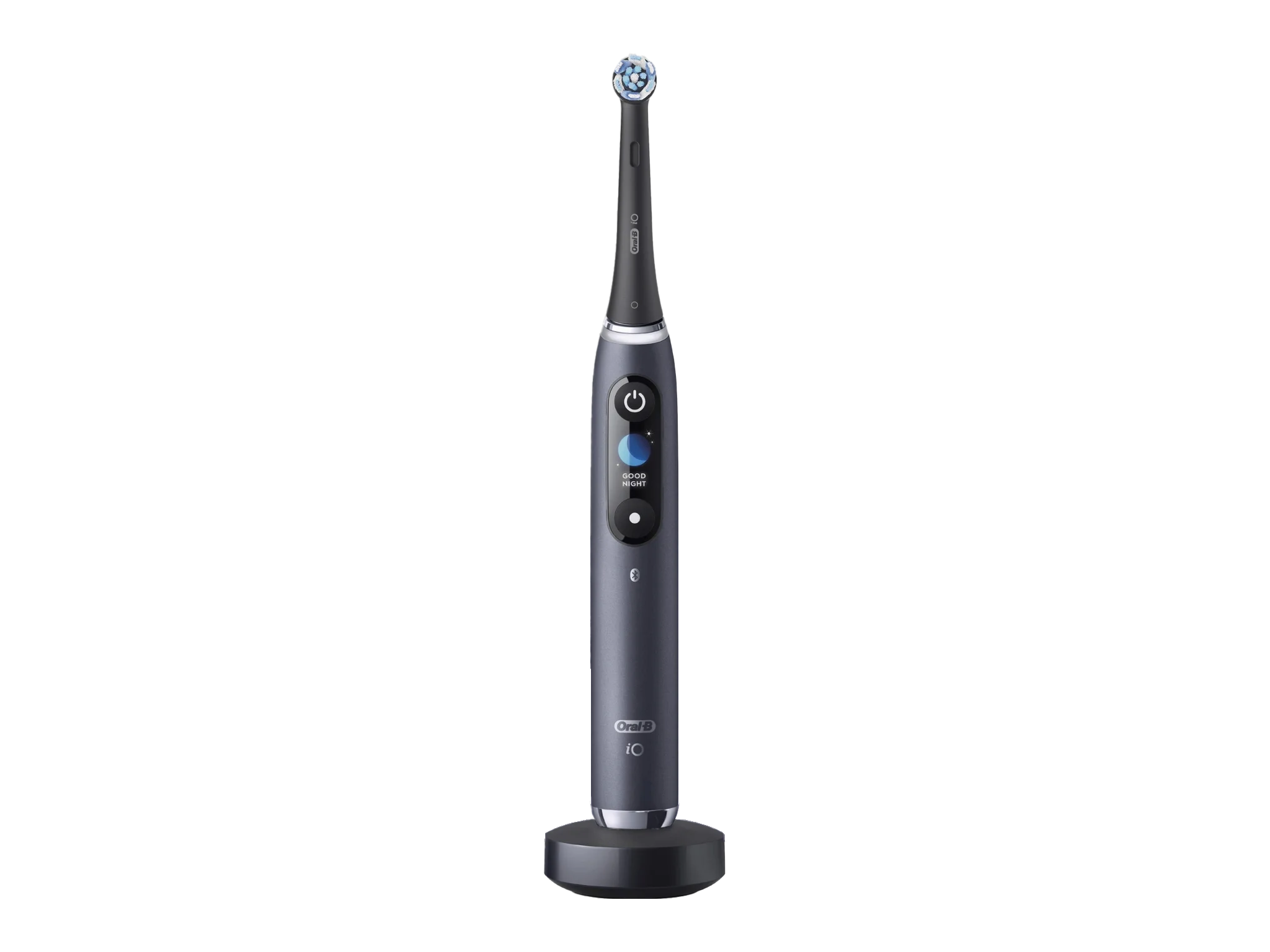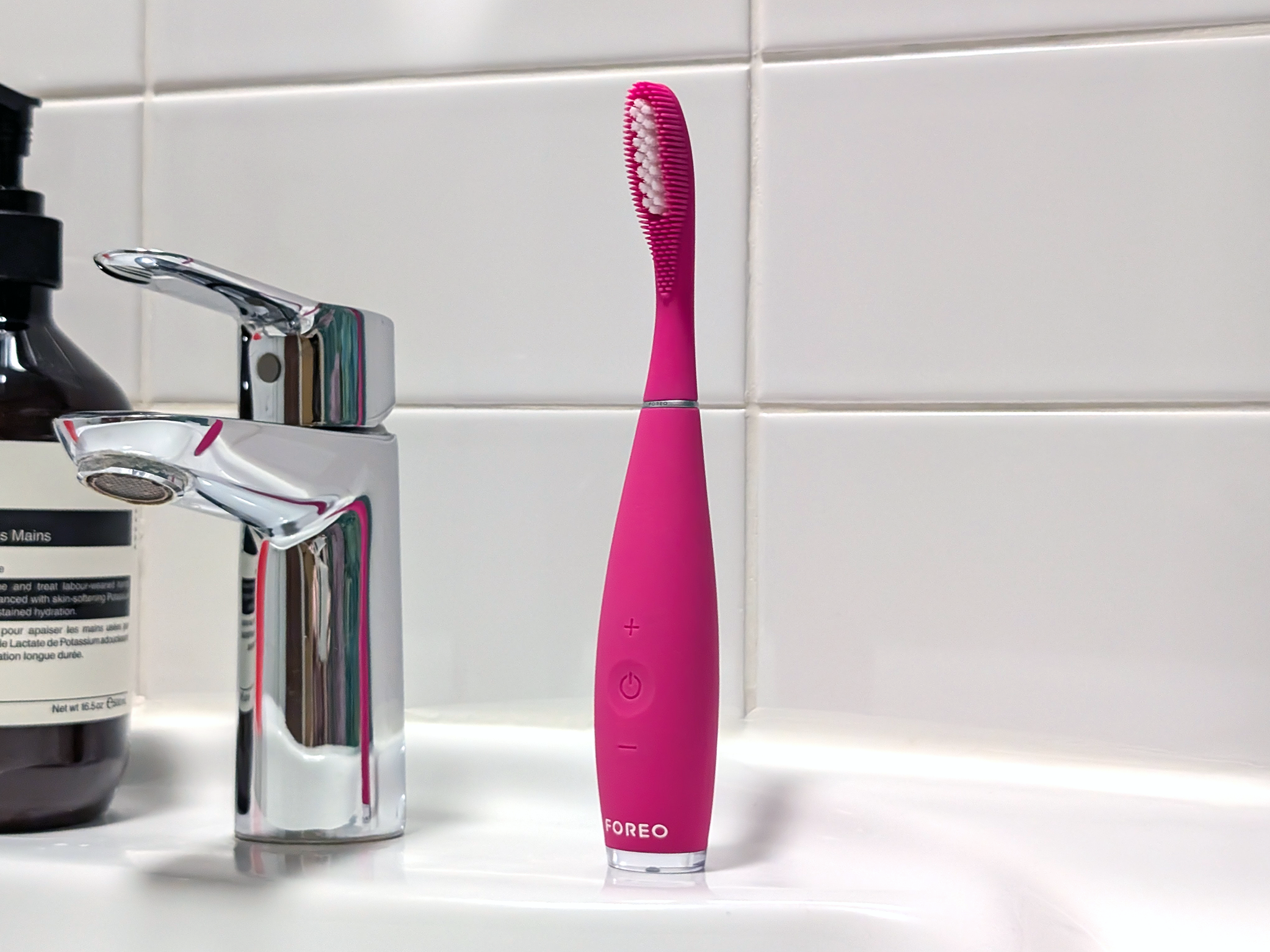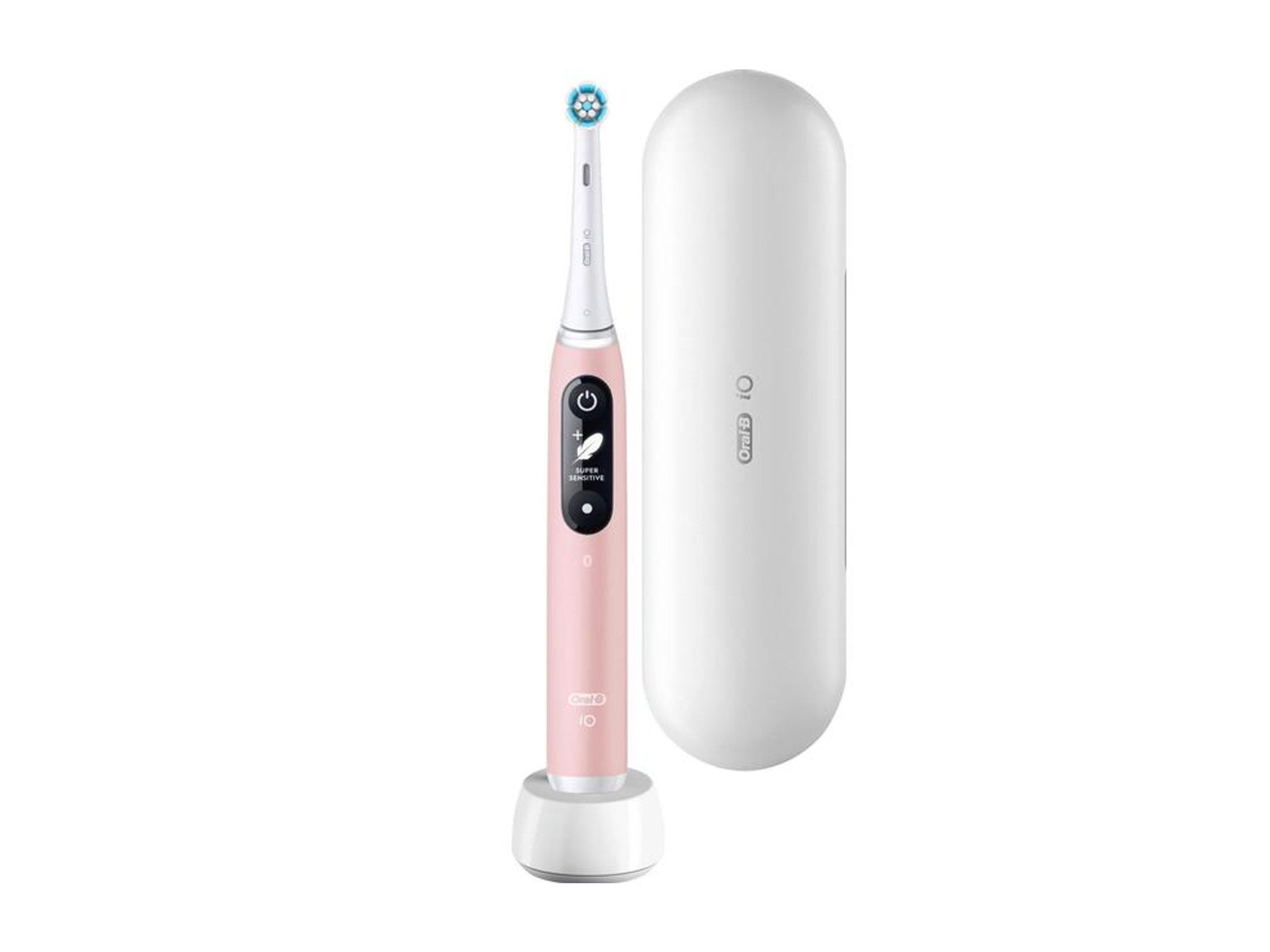
The Independent's journalism is supported by our readers. When you purchase through links on our site, we may earn commission. Why trust us?
13 best electric toothbrushes, tried and tested for brighter, healthier teeth
From Philips to Oral-B, there are brushes to suit every smile

The two main electric toothbrush brands, Oral-B and Philips have more toothbrushes than you have teeth in your mouth. There’s a bewildering selection to choose from, ranging from the sub-£20 Philips One to the premium Oral-B iO9 and Philips Sonicare 9900. But what’s the difference between all of these brushes? Why are some of them so expensive? And are there any alternatives?
The best electric toothbrush for you isn’t necessarily the most expensive model with the most advanced features. You probably don’t need a Bluetooth-enabled coaching app to tell you how to brush your teeth properly, and you might not need a faux-leather travel case that doubles as a charger.
We asked Dr Praveen Sharma – a specialist in restorative dentistry and scientific advisor to the British Dental Association – which important features to look out for. The expert recommends an electric toothbrush that’s rechargeable and has a timer, medium-stiffness bristles and a small brush head. “Don’t let the cost of really expensive brushes put you off,” says Dr Sharma. “Even the most reasonably priced ones can have the features listed above. Other features are in the category of ‘nice to have but not essential’.
“Whether you use a manual or an electric toothbrush, the most effective way to clean teeth is to use the correct technique, brushing all surfaces of the teeth for at least two minutes, with a fluoride toothpaste,” says Dr Sharma. “Your dentist or dental hygienist will be happy to advise on individualised oral hygiene regime/aids, including tooth-brushing training.”
Most of the brushes we’ve featured have all of these basic necessities included, and many come with extra features, such as pressure sensors, that you may find useful. Where there are exceptions, we’ve pointed them out. We’ve also tested some more environmentally sustainable electric toothbrushes, which aim to reduce plastic waste by using recyclable brush heads.
How we tested the best electric toothbrushes
We tested a wide range of electric toothbrushes in the real world, by asking our testers to swap out their regular brush for each of the models featured below. Using these models for several weeks, our testers paid close attention to how well each toothbrush removed plaque and lingering food debris, as well as how comfortable each brush felt to hold, how user-friendly each model’s app was, how long each brush lasted on a single charge, and how easy they were to recharge.

The brushes in our round-up were tested on a variety of mouths, including family and friends going through teeth-straightening with invisible braces and those with implants and sensitivity. We asked testers to rate the brushes on how thoroughly they felt their teeth had been cleaned after one- and two-minute intervals, as well as ranking them for battery life, portability and comfort.
We also considered the price of each electric toothbrush versus the ongoing cost of replacing the brush heads. Some of the more-premium brushes require expensive replacement brush heads, but it’s worth shopping around online for off-brand replacements, particularly for the most popular toothbrush brands. There’s no quality guarantee when buying third-party brush heads but, during testing, we noticed no difference in results.
The best electric toothbrushes for 2024 are:
- Best overall – Oral-B pro 3: £40, Amazon.co.uk
- Best for the environment – Suri electric toothbrush: £75, Trysuri.com
- Best for travelling – Philips one: £15.99, Amazon.co.uk
- Best premium electric toothbrush – Philips Sonicare 9900 prestige: £525, Amazon.co.uk
- Best for braces – Oral-B iO9: £249.99, Amazon.co.uk
- Best for cheap replacement heads – Oral-B genius X: £113.28, Amazon.co.uk
Oral-B pro 3

- Best: Overall
- Cleaning modes: Three
- Battery life: Two weeks
- Phone app: No
- Replacement head price: Around £4
- Why we love it
- Great cleaning power
- Relatively affordable
- Take note
- Noisier than the iO range
Suri sustainable electric toothbrush

- Best: For the environment
- Cleaning modes: Two
- Battery life: 40 days
- Phone app: No
- Replacement head cost: Around £5
- Why we love it
- Comes with magnetic mirror mount
- More sustainable than most
- Self-cleaning case
- Take note
- No pressure sensor
Philips Sonicare 9900 prestige

- Best: Premium electric toothbrush
- Cleaning modes: Five
- Battery life: Two weeks
- Phone app: Yes
- Replacement head price: Around £12 each
- Why we love it
- Intense sonic cleaning action
- Stylish charging travel case
- Take note
- Expensive
Philips Sonicare DiamondClean Smart

- Best: Affordable Sonicare brush
- Cleaning modes: Four
- Battery life: Two weeks
- Phone app: Yes
- Replacement heads: Around £8
- Why we love it
- Includes charging glass
- Neat and clean design
- Clever pressure sensor warnings
Philips one

- Best: For travel
- Cleaning modes: One
- Battery life: 90 days
- Phone app: No
- Replacement head cost: Around £5
- Why we love it
- Simple, travel-friendly design
- Triple-A battery lasts 90 days
- Take note
- No recharging option
- Basic functions
Spotlight oral care sonic toothbrush

- Best: Value for money
- Cleaning modes: Three
- Battery life: Two weeks
- Phone app: No
- Replacement head cost: Around £7
- Why we love it
- Good range of modes
- Comes with three replacement heads
- Take note
- No pressure sensor
Oral-B iO3

- Best: Cheap iO electric toothbrush
- Cleaning modes: Three
- Battery life: Two weeks
- Phone app: No
- Replacement head cost: Around £10
- Why we love it
- Pressure warning light-ring
- Best value brush in the iO range
- Take note
- Slow to recharge
Oral-B iO9

- Best: For orthodontics
- Cleaning modes: Seven
- Battery life: 14 days
- Phone app: Yes
- Replacement head price: Around £10
- Why we love it
- Powerful, comfortable cleaning action
- Take note
- Replacement heads can be expensive
Foreo issa 3

- Best: For sensitive gums
- Cleaning modes: 16 intensity settings
- Battery life: 180 days
- Phone app: No
- Replacement head cost: Around £20
- Why we love it
- Amazing battery life
- Great for sensitive gums
- Tongue cleaner included
- Take note
- Large brush head isn’t ideal for orthodontics
Oral-B iO4

- Best: Affordable iO electric toothbrush
- Cleaning modes: Four
- Battery life: Two to three weeks
- Phone app: Yes
- Replacement head price: Around £10
- Why we love it
- Relatively affordable for the iO range
- Take note
- No digital display
Ordo sonic +

- Best: For whitening
- Cleaning modes: Four
- Battery life: Three weeks
- Phone app: No
- Replacement head cost: About £4
- Why we love it
- Replacement heads are on the cheaper side
- Take note
- No pressure sensor
Oral-B genius X

- Best: For cheap replacement heads
- Cleaning modes: Six
- Battery life: Two weeks
- Phone app: Yes
- Replacement heads: Around £4
- Why we love it
- Affordable replacement heads
- Take note
- Noisier than the iO brushes
Oral-B iO6

- Best: Mid-range electric toothbrush
- Cleaning modes: Five
- Battery life: Two weeks
- Phone app: Yes
- Replacement heads: Around £10
- Why we love it
- iO smart features at a reasonable price
- Take note
- Travel case doesn’t charge the brush
Electric toothbrush FAQs
Do dentists recommend Oral-B or Sonicare?
Oral-B and Philips’s Sonicare are two of the most widely recommended toothbrush brands by dentists, but there’s no industry consensus on which electric toothbrush is best. Dentists recommend a wide range of electric toothbrushes, and, depending on who you ask, you’ll get a different answer.
One thing almost every dentist agrees on, however, is that electric toothbrushes are better at cleaning than manual toothbrushes. Even more important than the type of brush you use is practising good dental hygiene habits: brushing regularly and for the dentist-recommended two minutes, reaching all parts of the mouth, and flossing.
Are round-head electric toothbrushes better?
Round-head electric toothbrushes oscillate thousands of times per minute, enough to efficiently remove plaque, bacteria and debris while brushing. A sonic or ultrasonic toothbrush, which is more likely to have a standard-shaped head, pulses tens of thousands of times per minute to break down and dislodge plaque, bacteria and debris.
There’s not a whole lot of evidence that sonic and ultrasonic toothbrushes are more effective than standard electric toothbrushes at cleaning teeth but, on paper, the newer technology packs more vibrations per second and could help remove plaque quicker.
Are electric toothbrushes better than manual toothbrushes?
Research shows electric toothbrushes are more effective at cleaning teeth and protecting from gum disease if they are used properly and for the recommended time. That’s because the vibration of the bristles works extra hard to remove plaque from your teeth and reduce the risk of inflammation of the gums.
Electric toothbrushes often have extra features that are also significant. A built-in timer, for example, can help ensure you brush your teeth long enough. Some toothbrushes even connect to your phone to bring you personalised brushing advice.
Some people report being more focused when cleaning their teeth with an electric toothbrush, and kids tend to find them more fun – especially if there are associated child-friendly apps involved. People with braces can also find it easier to keep their teeth clean with an electric toothbrush.
But electric toothbrushes are pricier than manual ones, and finding replacement heads isn’t always easy. It’s also worth noting not everyone likes the feeling of using them.
Can electric toothbrushes be bad for your teeth?
Brushing too hard and fast with an electric toothbrush can permanently damage teeth enamel and cause gum recession. But electric toothbrushes can only damage teeth and gums in this way if excess pressure is applied, so always make sure you allow the movement of the toothbrush to do all the hard work.
Top features to look for in an electric toothbrush
- Brushing timer – This will help to make sure your teeth are brushed for the dentist-recommended time of two minutes. Some electric toothbrushes are programmed to be on for just two minutes, while others will alert you by beeping or vibrating when it’s time to stop.
- Brushing modes – Some brushes, often those that are more expensive, come with a range of brushing modes, which are designed to tailor your electronic toothbrush to your cleaning needs, for example, if you have sensitive teeth, you can opt for a gentler setting.
- Pressure sensor – Pressing too hard against your teeth can cause harm to your gums, so some electric toothbrushes have pressure sensors to alert you when you’re pushing too hard.
- Mobile apps – A range of electric toothbrushes have Bluetooth, meaning they can connect to your phone via an app, and doing so gives you additional data on how you brush your tooth. With some apps, such as Oral B, you’ll receive real-time feedback, as well as tips and instructions.
How to use an electric toothbrush properly
Hold your toothbrush at a 45-degree angle towards the gum line. Move the brush gently back and forth, with a circular movement over the front, back and top of your teeth. Don’t scrub, especially along the gum line, and use floss for harder-to-reach areas between the teeth. Some toothbrushes also allow you to brush your tongue, to combat cavity-causing bacteria.
You should spend at least two minutes using this technique, spending 30 seconds on each section of your mouth – upper right, upper left, lower right and lower left. Repeat both morning and night.
How to clean an electric toothbrush
To make sure your electric toothbrush stands the test of time, we’d recommend cleaning it regularly. Rinse the toothbrush head and electric body after every use, to remove toothpaste build-up and excess grime. A cotton bud can also be used to reach areas such as the base, while a damp cloth may help remove tougher debris.
How long do electric toothbrushes last?
The average electric toothbrush lasts three to five years. Many electric toothbrushes come with a two-year warranty but you will need to change the heads more frequently – the general advice is at least every three months. Some of the newer electric toothbrush heads have colour-change indicators to alert you to when they need replacing.
The verdict: Electric toothbrushes
If you want an electric toothbrush that isn’t too expensive and is relatively cheap to buy replacement heads for, we recommend the Oral-B pro 3. Its oscillating brush head features a powerful cleaning action and can easily get into those hard-to-reach spots, while the 360-degree pressure sensor ensures you’re brushing safely.
For a genuinely great-looking electric toothbrush from a brand that’s trying to reduce its environmental impact, Suri’s sustainable brush is highly recommended. Even if you couldn’t give a hoot about plastic waste, the brush looks smart, cleans brilliantly and comes in a slim and compact travel case.
For a dazzling smile, try one of the best whitening toothpastes
Voucher Codes






